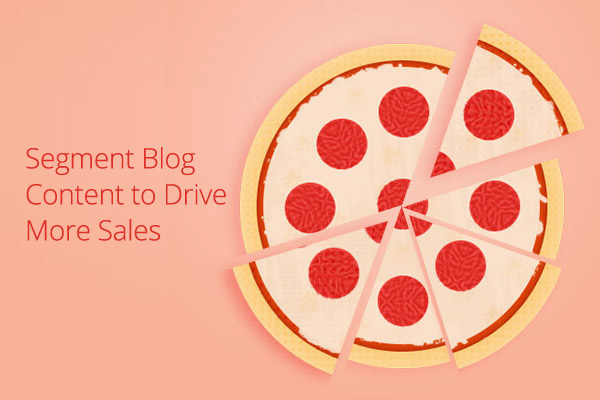Blog segmenting for Lead conversion
Let’s say you walk into a library looking for a children’s book. You obviously expect to find neat stacks of books lined right up to the top, with clear demarcations about category and sub category. That way you know where to look and you won’t be fishing around wasting precious time.
Blog segmentation is similar, it’s a neat technique that helps you compartmentalise your content, so that it can be searched on easily and quickly by those who are looking for exactly that particular piece of content.
Segmentation of your content
Blog segmentation is a step your brand should typically employ in the initial stages of the online marketing strategy, that way you can tailor-make blog content depending on the user and increase the probability of closing a sale. By using social media tools, you already have at hand a valuable data bank that defines the precise attitudes and needs of your potential customer, thereby making your job a wee bit easier.
To illustrate this point, let’s imagine a clothing web portal that posts regular blogs on fashion tips and styles of the season. This portal will segment their blogs such that a defined group of people will be seeing distinct and relevant blog posts pertaining and appealing to them and only them. An 18 year old girl, who is probably going to college and is interested in online sales and discounts, will be most likely to see blogs such as ‘Summer Sales, get upto 50% off’ or perhaps ‘Pocket friendly fashion for the teenager’.
The more a person sees personalised content, the more he/she feels the marketing messages were undoubtedly created for them and the higher your chances for conversions. What’s more, the better the long-term relationship with the customer will be.
All said and done, segmentation does take on varied hues once you get down to it. For e.g., there are segments based on broad categories such as geographical location, gender basis, age basis and even interest based segmentation.
Consider this Psycho-graphic parameters
If you’re looking at segmentation based on Geographical parameters you’ll have a fair idea about the climate, the weather, probably population statistics too.
Geo Locations
This way you can generate specific content for a country/ city based on these broad parameters. It is definitely safe to assume that people living in Russia would require snow boots, isn’t it?
Furthermore, there is an added advantage of upselling your products. So say, you’ve posted blog content on Skiing gear, you can also post related blogs such as Ski tours or ski boots.
Therein lies your opportunity to create more sales.Now suppose you’re segmenting your blogs based on Psycho-graphic parameters, you will most assuredly begin with data about their personal interests, values, way-of-thinking and standards of living. This allows you to decide which blog can be viewed by whom. Coupled with other data such as details on where they live, payment mode preference, what they wear or drive and what they like to purchase, blogs are an effective sales arsenal ready at hand.
Target interesting and specific blogs that would appeal to a customer (who you know beforehand) has a natural affinity to desire something over other choices. Ordinary content will create ordinary relationships and you can expect only ordinary results from your targeted blog campaign- The key word being relevance and user interest.
Age and Gender
Another vital criterion of segregation is based on age and gender. Remember, these are extremely important parameters and allow you to post content that is based on hard data such as buyer preferences of male versus females and varying purchasing tendencies of people from differing age groups.
Compartmentalizing and targeting specific blogs based on this criterion will generate more sales as the content is more relevant to their tastes and persona. As far as possible, choose fascinating blog topics that avoid sweeping statements about any particular age or gender.
Which segmentation parameter to choose?
Not too small, not too big, that is the mantra of blog segmentation. Ideally, choose the segmentation parameters such be such that they remain consistent and constant even over a period of time. Don’t try to gauge the efficacy of your campaign based on the one time promotional campaign.
Remember, the right bait and hook catches the biggest fish.









